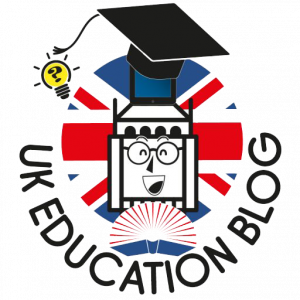eLearning has made teaching more flexible and convenient. Now it’s possible to conduct remote classes and even run asynchronous learning programs.
However, many teachers remain faithful to traditional pen-and-paper knowledge assessments and don’t take advantage of the many opportunities that technologies offer.
In this article, you’ll learn about five knowledge assessment methods that will help you keep up to date, reduce manual checks, and deliver engaging online lessons.
What Is Knowledge Assessment?
 Knowledge assessment is a process that helps teachers see how well students have learned and retained the material and compare their performance with learning objectives. It shows whether students can understand and apply the information they’ve been taught.
Knowledge assessment is a process that helps teachers see how well students have learned and retained the material and compare their performance with learning objectives. It shows whether students can understand and apply the information they’ve been taught.
Although assessments are most often used to check students’ knowledge and skills, they also provide an educational function. By completing the tasks, students focus on important aspects that were initially overlooked and see how they work in practice.
The 5 Best Ways to Assess Student Knowledge and Skills Online
In fact, most online assessment methods are not entirely new — everything we are going to talk about can be accomplished in traditional face-to-face settings.
However, we’ll show how much easier and more engaging these practices can be when moved online.
1. Online quizzes
 Multiple-choice, true, or false, fill-in-the-blank questions… Simple and proven, quizzes are a mainstay of assessment. Many teachers love using them online as well because quizzes are:
Multiple-choice, true, or false, fill-in-the-blank questions… Simple and proven, quizzes are a mainstay of assessment. Many teachers love using them online as well because quizzes are:
- Universal. You can use these at the beginning of a lesson to quickly check students’ knowledge of a previous topic or to create non-graded quizzes to fuel interest in a subject. They’re also great for baseline measurements or end-of-term exams.
- Easy to grade. In general, quizzes are easier and quicker to check than open-ended questions or essays. But with eLearning tools, you can automate this process, so there’s no need to spend time checking them manually.
- Great for assessing large audiences. You can easily measure the learning results of even hundreds of students in a short period of time.
Quizzes paired with advanced technology become even more useful for teachers and more engaging for students. To create online quizzes, you can use an eLearning authoring toolkit, such as iSpring Suite.
All you need to do is choose from 14 ready-made quiz templates, enter your question and answer options, set scoring rules, and the quiz is ready to go.
For reliable results, you can set time limits and randomize questions and answers to eliminate cheating. To enhance such an assessment, you can provide feedback for incorrect answers, add info slides, and set branching scenarios to create individual learning paths based on the students’ responses.
2. Simulations
 Although role-plays are less common than quizzes, they are becoming increasingly popular among teachers. They aim to authentically replicate a given environment or challenge, giving students the opportunity to train for real-life situations.
Although role-plays are less common than quizzes, they are becoming increasingly popular among teachers. They aim to authentically replicate a given environment or challenge, giving students the opportunity to train for real-life situations.
Role-plays can be used in many areas. For example, you can use them to develop the students’ decision-making and interpersonal communication skills or to provide practice during language lessons. In higher education, you can use role-playing to assess students’ professional skills, such as holding a diplomatic conversation, providing sensitive medical care, or acting as a psychologist or counsellor.
If you’re going to run role-plays online, try creating them in iSpring Suite. It has an intuitive drag-and-drop interface that allows you to build simulations quickly and easily. Simply make up a scenario — think of a fictional situation and role-play lines, select a suitable character with a background from the content library, and set up branches in the tool. As with quizzes, you can provide feedback on each answer and award points for successful completion.
3. Open-ended questions and essays
 Such assignments push your students to think critically and apply the cognitive skills needed to respond in their own words. Essays and open-ended questions have two main benefits:
Such assignments push your students to think critically and apply the cognitive skills needed to respond in their own words. Essays and open-ended questions have two main benefits:
- Improve speaking and writing skills. Students practice expressing their thoughts, feelings, and ideas in a manner that is logical and comprehensive.
- Boost creativity. When students are encouraged to reason, reflect, and think about a topic, they learn to think creatively and are more likely to gain new perspectives and come up with fresh ideas.
You can create open-ended or essay-type questions using iSpring Suite. However, unlike quizzes or simulations, it is difficult to trust a computer to assess students’ detailed answers and grade them appropriately. Therefore, you’ll need to check each answer manually.
4. Online discussions
 The next level method after open-ended questions is discussion. They help students think more deeply, find different perspectives on a topic, and make connections. Teachers have many ways to facilitate student discussions online.
The next level method after open-ended questions is discussion. They help students think more deeply, find different perspectives on a topic, and make connections. Teachers have many ways to facilitate student discussions online.
For example, if you want students to collaborate and interact with each other, you can divide them into teams, each working on a specific project. Students can share and respond to each other’s ideas using web conferencing tools like Google Meet and brainstorm their ideas using a visual collaboration tool, such as Miro Board. After the discussion, learners can collect and present the best ideas. In addition to cases, you can ask students to create infographics together, using special tools like Pictochart or Visme. This will help them organize knowledge on a broad topic.
Alternatively, you can conduct asynchronous discussions through open public forums such as Quora or Reddit, or social media. This is how it works: you outline the topic, start a discussion, and invite students to continue it, supporting their views with relevant examples and arguments.
No matter which method you choose, it’s important to clarify from the beginning that you expect students’ active participation and are going to translate their engagement into grades.
5. Explanatory videos
 According to the Learning Pyramid model, teaching others increases knowledge retention by 90%. If students are able to explain the topic accurately and correctly, it means they’ve mastered the subject.
According to the Learning Pyramid model, teaching others increases knowledge retention by 90%. If students are able to explain the topic accurately and correctly, it means they’ve mastered the subject.
You can break down a broad topic that students have studied into different aspects and ask some of them to create short explanatory videos to present a concept to the class. Let them be creative and make videos the way they prefer, and you’ll see how engaged they get.
Creating explanatory videos can be super easy with iSpring Suite. With this tool, students can create video presentations directly in PowerPoint, record and edit video lectures, and combine them with screencasts.
The students can then share their videos on a common platform, such as an LMS if you use one, or on your group’s social media page, so their classmates can give them feedback.
4 Tips for Effective Knowledge Assessment
 Regardless of which method of student assessment you choose, it’s important to remember these key principles:
Regardless of which method of student assessment you choose, it’s important to remember these key principles:
1. Involve students in creating knowledge checks
Students can create short quizzes for their peers and then check each other’s answers. Such an approach will help you pique their interest and increase knowledge retention.
2. Make criteria transparent
When carrying out a knowledge check, you should not only have the ultimate learning objectives in mind but also give students a clear understanding of what is expected of them and how it will be assessed. This will help them avoid making mistakes because they don’t understand the task.
3. Provide feedback
Let your students know if they’re on the right track by giving them regular feedback. This is even more important in an eLearning environment because not everyone is tech-savvy yet. Post comments on students’ answers in forums, and provide immediate feedback in quizzes and simulations.
Text feedback is not always ideal, especially if you need to point out students’ mistakes. You can arrange feedback sessions using web conferencing tools so the students can hear your voice and there’s less chance of your feedback being misinterpreted.
4. Conduct non-graded surveys
 If the topic is quite complicated or the test shows poor results, conduct a non-graded survey to find out what caused the difficulties and how to improve the content or teaching methods.
If the topic is quite complicated or the test shows poor results, conduct a non-graded survey to find out what caused the difficulties and how to improve the content or teaching methods.
iSpring Suite is great for creating non-graded surveys. With different questions, such as the Likert scale and true or false, you’ll get reliable feedback from students quickly and improve your teaching practices.
Takeaways
Creating effective online assessments doesn’t require you to be a tech geek. All you need is a little creativity to slightly adjust the familiar practices to the eLearning environment. We hope our tips will help you make knowledge assessments more impactful and engaging for your students, especially for the future of global schooling.
Author Profile

- Editor in Chief
- Blogger and Educator by Passion | Senior Online Media & PR Strategist at ClickDo Ltd. | Contributor to many Education, Business & Lifestyle Blogs in the United Kingdom & Germany | Summer Course Student at the London School of Journalism and Course Instructor at the SeekaHost University.
Latest entries
 Directory PostsOctober 29, 20257 Not-To-Miss UK Education Conferences in 2026
Directory PostsOctober 29, 20257 Not-To-Miss UK Education Conferences in 2026 Directory PostsOctober 16, 2025The 12 Best Online Tutoring Platforms in the UK
Directory PostsOctober 16, 2025The 12 Best Online Tutoring Platforms in the UK Directory PostsOctober 6, 2025Top 12 London Private Schools – Best Independent Schools Nearby
Directory PostsOctober 6, 2025Top 12 London Private Schools – Best Independent Schools Nearby careerSeptember 10, 20258 Top Online Future Career Courses To Know
careerSeptember 10, 20258 Top Online Future Career Courses To Know





